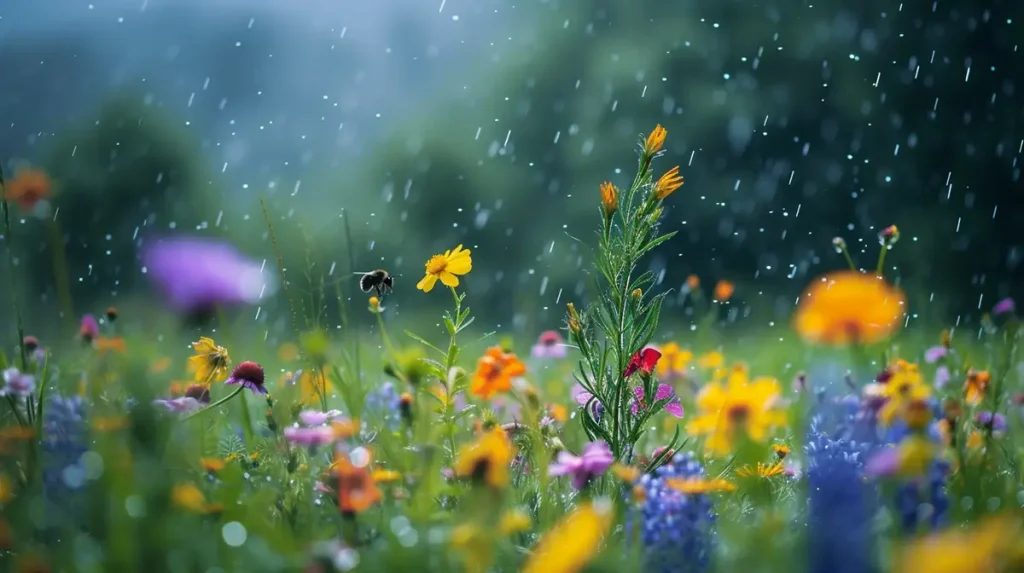Table of Contents
Biodynamic beekeeping is an organic approach emphasizing the sustainable and holistic relationship between bees, humans, and the environment. It avoids synthetic chemicals, encourages natural bee behaviors, and considers lunar cycles and ecological balance. This method focuses more on bee health and environmental harmony than on maximizing honey production.
In the below paragraphs, we will take a more detailed look at this topic.
What Are the Key Principles of Biodynamic Beekeeping?
Biodynamic beekeeping is an approach to beekeeping that emphasizes the holistic health and wellbeing of honeybees and their role in the ecosystem. It focuses on creating a natural, sustainable environment for bees that prioritizes their needs rather than just maximizing honey production. There are several key principles that guide biodynamic beekeeping practices:
1. Natural Beekeeping Practices
Biodynamic beekeepers strive to create a more natural environment for their bees by using organic materials, avoiding synthetic chemicals, and allowing bees to build their own wax comb. This helps maintain the bees’ natural behaviors, and allows them to self-regulate their colony and health.
2. Biodiversity
Biodiversity is essential to biodynamic beekeeping as it provides bees with a diverse range of pollen and nectar sources throughout the year. By planting a variety of flowering plants, trees, and shrubs, beekeepers can support the health of their bees and the surrounding ecosystem.
3. Respect for Bee Autonomy
Biodynamic beekeepers aim to minimize their intervention in the hive, allowing bees to function as they would in nature. This includes allowing the bees to swarm, which is a natural process for colony reproduction, and avoiding the use of queen excluders, which can limit the queen’s movement within the hive.
4. Sustainable Harvesting
When it comes to honey harvesting, biodynamic beekeepers prioritize the wellbeing of the bees over maximizing production. This means harvesting only the surplus honey, ensuring that the bees have enough to sustain themselves through the winter months.
5. Holistic Pest and Disease Management
Biodynamic beekeeping focuses on prevention and natural remedies for pest and disease management. By maintaining strong, healthy colonies and utilizing natural treatments when necessary, biodynamic beekeepers look to minimize the impact of pests and diseases on their hives.
By adhering to these key principles, biodynamic beekeepers create a sustainable and healthy environment for their bees, fostering a balanced ecosystem and promoting the overall well-being of these vital pollinators.
What Are Biodynamic Preparations, and How Are They Used in Beekeeping?
Biodynamic preparations are a set of specific natural substances used in biodynamic agriculture, which aim to enhance soil fertility, plant growth, and overall ecosystem health. These preparations are derived from plants, minerals, and animal manure and are applied in small quantities, similar to homeopathic remedies. In the context of biodynamic beekeeping, these preparations are used to support the health of both the bees and their environment. Here are some common biodynamic preparations and how they are utilized in beekeeping:
1. Horn Manure (BD 500)
Horn Manure is a preparation made from cow manure that has been fermented in a cow horn buried in the soil for several months. When properly prepared, it is diluted in water and applied to the soil around the apiary. This preparation helps to stimulate root growth, improve soil structure, and promote beneficial microbial activity, which in turn supports the health and diversity of flowering plants available to the bees.
2. Horn Silica (BD 501)
Horn Silica is made from finely ground quartz that has also been packed into a cow horn and buried for a few months. It is then diluted in water and sprayed on plants in the beekeepers’ surrounding environment. This preparation enhances photosynthesis, promotes healthy plant growth, and strengthens plants’ resistance to pests and diseases, providing healthier forage for the bees.
- Carter, Anthony (Author)
- English (Publication Language)
- 194 Pages - 02/28/2024 (Publication Date) - Independently published (Publisher)
3. Compost Preparations (BD 502-507)
A set of six preparations, BD 502-507, are made from different plant materials such as yarrow, chamomile, stinging nettle, oak bark, dandelion, and valerian. These preparations are added to compost, which is then used to fertilize the plants around the apiary. By enriching the compost with these preparations, biodynamic beekeepers can support the growth of diverse and healthy plants, providing a more robust source of pollen and nectar for their bees.
4. Equisetum Tea (BD 508)
Equisetum tea is a preparation made from the horsetail plant (Equisetum arvense). It is used as a foliar spray on plants near the apiary to help regulate the growth of fungi and promote balanced plant growth. By controlling fungal diseases in the plants, beekeepers can provide a healthier environment for their bees to forage.
Biodynamic preparations play a crucial role in supporting the health and wellbeing of bees and their environment in biodynamic beekeeping. By using these preparations, beekeepers can create a more sustainable, diverse, and balanced ecosystem that benefits both the bees and the surrounding plant life.
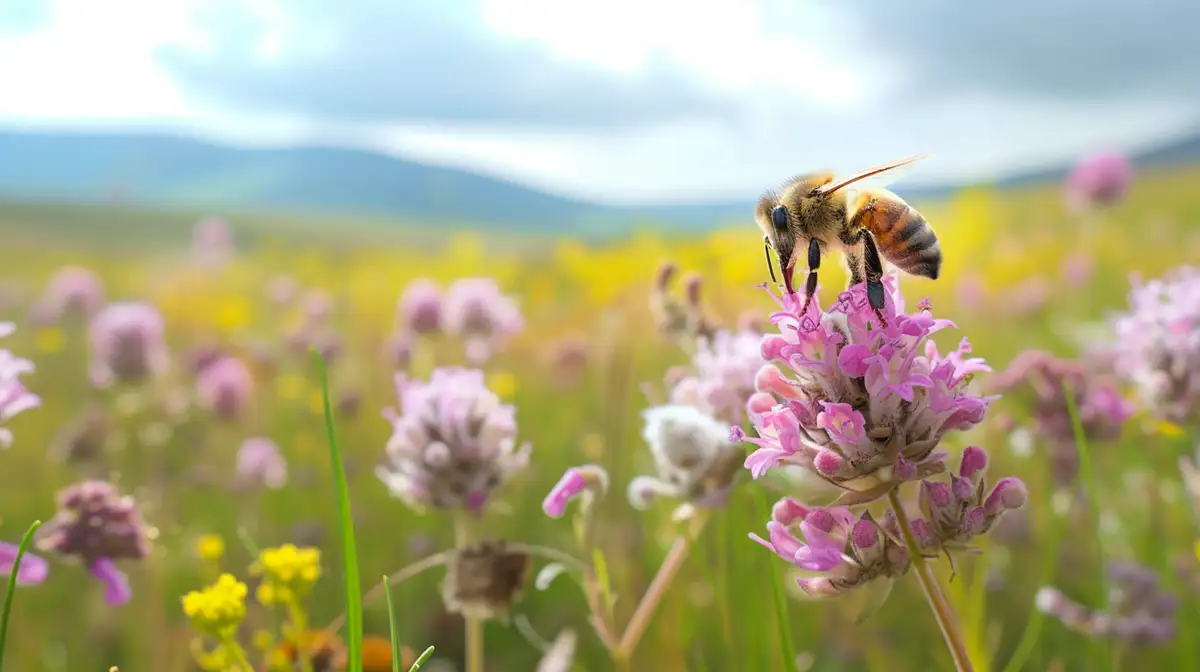
How Does Biodynamic Beekeeping Benefit the Bees?
By prioritizing the bees’ needs over maximizing honey production, biodynamic beekeeping offers several benefits to the bees. These include:
Healthier Hives
By using natural materials and avoiding synthetic chemicals, biodynamic beekeepers create a more favorable environment for their bees. This approach helps maintain the bees’ natural immune system and resilience, reducing the risk of diseases and colony collapse.
Improved Nutrition
The emphasis on biodiversity in biodynamic beekeeping ensures that bees have access to a range of pollen and nectar sources throughout the year. This variety in diet is essential for the bees’ health as it provides them with the necessary nutrients, vitamins, and minerals to thrive.
Reduced Stress
Biodynamic beekeeping practices aim to minimize human intervention in the hive, allowing bees to function more naturally. By respecting bee autonomy and allowing them to self-regulate their colony, biodynamic beekeepers reduce the stress on the bees, which can lead to improved overall health and longevity.
Stronger Colonies
By allowing natural processes like swarming, which is essential for colony reproduction, biodynamic beekeepers help maintain strong and genetically diverse colonies. This genetic diversity is crucial for the bees’ ability to adapt to changing environmental conditions and to resist diseases and pests.
Enhanced Ecosystem
The use of biodynamic preparations in beekeeping promotes healthy plant growth and soil fertility in the surrounding environment. This approach benefits the bees by providing a more stable and diverse habitat, which in turn supports a more robust population of pollinators.
Here’s a detailed table outlining how biodynamic beekeeping benefits bees:
| Aspect of Biodynamic Beekeeping | Benefits to Bees |
|---|---|
| Natural Hive Structures | Promotes natural comb building, allowing bees to follow their instinctive patterns. Reduces stress by providing a more familiar and comfortable environment. |
| Avoidance of Synthetic Chemicals | Ensures a toxin-free habitat, leading to healthier bee colonies. Reduces the risk of chemical-induced diseases and disorders. |
| Emphasis on Biodiversity | Ensures a toxin-free habitat, leading to healthier bee colonies. Reduces the risk of chemical-induced diseases and disorders. |
| Sustainable Practices | Supports long-term colony health and resilience. Encourages genetic diversity, which can lead to stronger bee populations. |
| Minimal Hive Interventions | Reduces stress and disruption to the bees’ natural life cycles. Decreases the risk of exposure to pathogens and parasites during frequent hive inspections. |
| Consideration of Natural Cycles | Aligns beekeeping activities with natural rhythms, promoting a more stress-free environment. Lunar and seasonal awareness may optimize times for honey production and colony expansion. |
| Use of Natural Treatments | Focuses on preventive health care, enhancing the colony’s natural ability to fight diseases. Avoids the side effects of synthetic medications, preserving the bees’ innate immunity. |
| Promotion of Bee-Friendly Foraging Areas | Increases access to clean, uncontaminated foraging grounds. Helps maintain a healthy ecosystem for bees and other pollinators. |
The table above highlights the key aspects of biodynamic beekeeping and their positive impacts on the health, well-being, and sustainability of bee colonies.
What Are the Challenges of Biodynamic Beekeeping?
While biodynamic beekeeping offers numerous benefits for bees and the environment, it also presents some challenges for beekeepers who choose to adopt this method. Some of the main challenges are:
Learning Curve
Adopting biodynamic beekeeping practices requires a shift in mindset and an understanding of holistic bee management. Beekeepers may need to invest time and effort into learning about biodynamic principles, natural beekeeping techniques, and the use of biodynamic preparations, which can be a steep learning curve for those accustomed to conventional beekeeping methods.
Lower Honey Yields
Biodynamic beekeeping prioritizes the wellbeing of the bees over maximizing honey production. This means that beekeepers may need to accept lower honey yields as they will harvest only the surplus honey to ensure the bees have enough resources to sustain themselves through the winter months. For commercial beekeepers, this could result in reduced profits.
Disease and Pest Management
Biodynamic beekeeping relies on prevention and natural remedies for disease and pest management. While this approach aims to minimize the impact of pests and diseases on the hives, it may not be as effective as conventional treatments in some cases, requiring beekeepers to be vigilant and proactive in maintaining the health of their colonies.
Time and Labor Intensive
The emphasis on biodiversity, sustainable harvesting, and holistic pest and disease management in biodynamic beekeeping can be time-consuming and labor-intensive. Beekeepers may need to devote more time to monitoring their hives, planting diverse flora, and preparing and applying biodynamic treatments.
Limited Resources and Support
As biodynamic beekeeping is a niche practice compared to conventional beekeeping, resources and support may be more limited. Beekeepers may need to actively seek out like-minded individuals, workshops, and courses to learn about biodynamic methods and share their experiences.
Despite these challenges, biodynamic beekeeping offers significant rewards in terms of bee health, environmental sustainability, and overall ecosystem balance. By understanding and overcoming these challenges, beekeepers can contribute to a more sustainable and healthy future for honeybees and the environment.
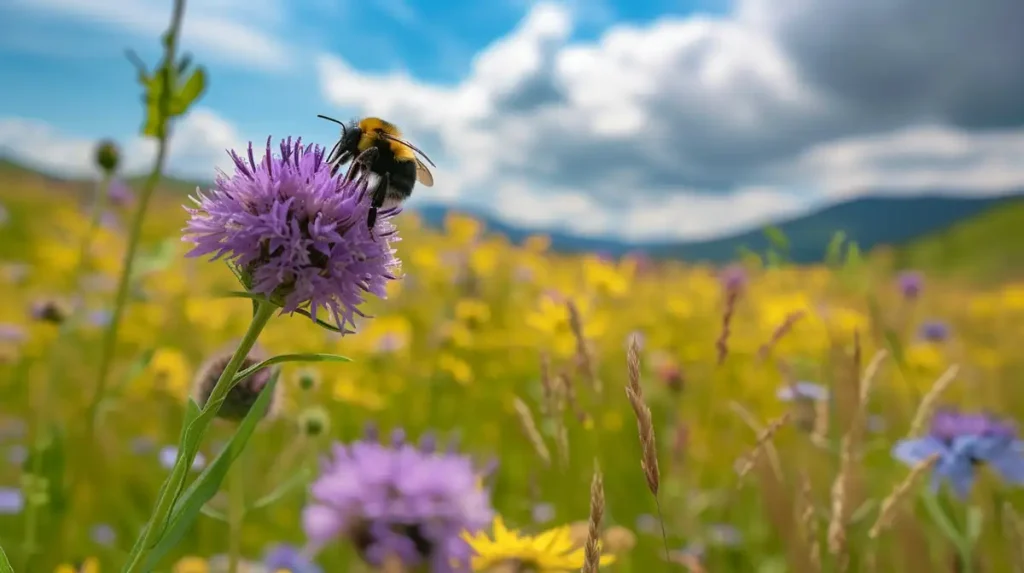
How Can I Get Started with Biodynamic Beekeeping?
If you’re interested in adopting biodynamic beekeeping practices, the following steps can help you get started and guide you on your journey:
1. Research and Education
Begin by learning about biodynamic principles and beekeeping practices. Read books, articles, and online resources on the subject and consider attending workshops, courses, or conferences to gain a deeper understanding of the methods and techniques involved.
2. Connect with Other Biodynamic Beekeepers
Networking with like-minded beekeepers can provide invaluable support, advice, and mentorship. Join local beekeeping clubs, online forums, or social media groups focused on biodynamic beekeeping to share experiences, ask questions, and learn from others who have already embarked on this path.
3. Prepare Your Apiary
Choose a suitable location for your apiary, taking into consideration factors like sun exposure, wind protection, and access to water. Design your apiary to promote natural beekeeping practices, using organic materials and avoiding synthetic chemicals. Opt for bee-friendly hive designs, such as top-bar hives or Warre hives, which encourage natural comb building and minimize interference with the bees’ natural behaviors.
4. Plant for Biodiversity
Create a diverse and healthy environment for your bees by planting a variety of flowering plants, trees, and shrubs that provide pollen and nectar sources throughout the year. Consider incorporating plants that are native to your area and have a history of supporting local pollinators.
5. Obtain Biodynamic Preparations
Learn about the different biodynamic preparations used in beekeeping and how to apply them to your apiary. You can either make the preparations yourself, following specific guidelines and recipes, or purchase them from reputable suppliers.
6. Develop a Holistic Management Plan
Create a plan for managing your hives that incorporates biodynamic principles, such as minimal intervention, sustainable harvesting, and natural pest and disease management. Regularly monitor your hives, adapt your management techniques as needed, and always prioritize the well-being of your bees.
7. Seek Continuous Improvement
As you gain experience with biodynamic beekeeping, continue learning and refining your practices. Stay up-to-date with new research and developments in the field, and be open to adjusting your approach based on your observations and the needs of your bees.
By following these steps and committing to the principles of biodynamic beekeeping, you can create a sustainable and healthy environment for your bees while contributing to the overall wellbeing of the ecosystems they inhabit.
What Are Some Common Misconceptions About Biodynamic Beekeeping?
Biodynamic beekeeping, as a niche and holistic approach to beekeeping, is often misunderstood or misinterpreted. To that end, here are some common misconceptions about biodynamic beekeeping and the truths behind them:
Biodynamic Beekeeping is the Same as Organic Beekeeping
While both biodynamic and organic beekeeping prioritize the use of natural materials and avoidance of synthetic chemicals, biodynamic beekeeping goes beyond organic practices by incorporating a holistic understanding of the bees’ role in the ecosystem and emphasizing the use of biodynamic preparations to support the health of the bees and their environment.
Biodynamic Beekeeping is Unscientific
Some critics argue that biodynamic beekeeping is unscientific or based on outdated beliefs. However, biodynamic methods are rooted in a deep understanding of ecological principles and the interconnectedness of nature. Many biodynamic practices align with scientific findings, such as the importance of biodiversity for bee health and the benefits of organic agricultural methods.
Biodynamic Beekeeping Cannot Be Commercially Viable
It is true that biodynamic beekeeping often results in lower honey yields compared to conventional methods, as it prioritizes the well-being of the bees over maximizing production. However, this does not necessarily mean that biodynamic beekeeping cannot be commercially viable. By focusing on quality over quantity and marketing their products as premium, sustainable, and environmentally-friendly, biodynamic beekeepers can still achieve success in the marketplace.
Biodynamic Preparations Are Ineffective or Superstitious
Some people believe that biodynamic preparations, such as horn manure and horn silica, are based on superstition and have no real effect on the bees or their environment. Nevertheless, many biodynamic practitioners have observed positive results from using these preparations, such as improved soil fertility, plant health, and overall hive health. While more research is needed to fully understand the mechanisms behind these effects, it is important not to dismiss the potential benefits of biodynamic preparations outright.
Biodynamic Beekeeping is Laissez-Faire or Neglectful
One common misconception is that biodynamic beekeeping involves minimal intervention or even neglect of the bees. In reality, biodynamic beekeepers are actively engaged in managing their hives, monitoring their bees’ health, and promoting a healthy environment. The goal is to minimize unnecessary interference, allowing the bees to function more naturally and self-regulate their colony while still providing support and care when needed.
By addressing these misconceptions, we can better understand the principles and practices of biodynamic beekeeping and appreciate its potential benefits for the health and well-being of honeybees and the ecosystems they inhabit.
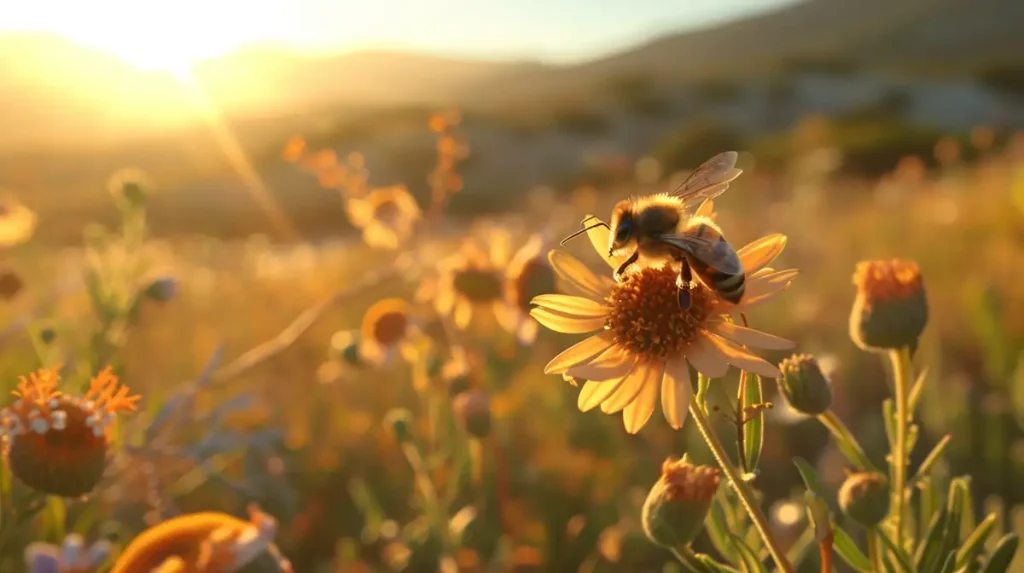
How Can Biodynamic Beekeeping Contribute to a Sustainable Future?
Biodynamic beekeeping offers a holistic and environmentally-conscious approach to beekeeping that has the potential to contribute to a more sustainable future in several ways:
1. Pollinator Health and Biodiversity
By prioritizing the wellbeing of bees and creating a diverse and healthy environment for them, biodynamic beekeeping helps support robust pollinator populations. Pollinators such as honeybees are essential for the reproduction of many plants, including a significant portion of the world’s food crops. By fostering pollinator health and biodiversity, biodynamic beekeeping plays a crucial role in maintaining resilient and productive agricultural ecosystems.
2. Sustainable Agricultural Practices
Biodynamic beekeeping practices align with sustainable agriculture, as they emphasize organic methods, biodiversity, and soil fertility. The use of biodynamic preparations helps promote healthy plant growth and soil structure, reducing the need for synthetic fertilizers and pesticides. This approach not only benefits the bees but also contributes to healthier, more sustainable food systems and a reduced environmental footprint.
3. Ecosystem Balance and Resilience
The holistic approach of biodynamic beekeeping recognizes the interconnectedness of nature and the importance of maintaining a balanced ecosystem. By supporting diverse plant and pollinator populations, biodynamic beekeeping helps create more stable and resilient ecosystems that can better withstand environmental stressors, such as climate change and habitat loss.
4. Education and Awareness
Biodynamic beekeeping raises awareness about the importance of bees and their role in the environment, as well as the impact of human activities on their wellbeing. By promoting sustainable practices and educating others about the benefits of biodynamic beekeeping, practitioners can inspire more people to adopt environmentally responsible habits and contribute to a more sustainable future.
5. Local and Ethical Food Production
Biodynamic beekeeping can contribute to local and ethical food production by providing high-quality, sustainably-produced honey and other bee products. By choosing biodynamic products, consumers can support environmentally-friendly practices and help create a market demand for more sustainable agricultural methods.
What is Biodynamic Honey?
Now that you know a bit more about biodynamic beekeeping, you can probably take a guess at what biodynamic honey is.
Biodynamic honey is harvested from hives that have been allowed to develop naturally with little or no intervention on the part of the beekeeper. Pesticides are not used and the hive itself will be made from natural materials, with bees being allowed to develop their own comb.
What is Organic Beekeeping?
Organic beekeeping is similar to biodynamic beekeeping in that it advocates for natural environments for the bees. From their homes to the way in which they make honey, everything should be as natural as possible. One of the consequences of this means that beekeepers will only resort to feeding their bees in the event that they might otherwise starve.
In their natural habitat, bees will eat pollen, nectar, and the honey they have made. They do not have access to sugar syrups, pollen patties, and other artificial foods so often provided by well-meaning beekeepers. One of the golden rules for organic beekeeping is that the bees should be left to feed themselves.
Of course, this means making sure that the bees have sufficient amounts of honey within the hive to consume over the course of the winter months when they are largely confined to the hive and flowers are scarce. In the event that starvation might occur, the organic beekeeper will provide organically sourced honey as a food option for the hive.
Like biodynamic beekeeping, organic beekeeping involves a complete avoidance of chemicals and pesticides for the control of mites as well as adding fertilizers to the surrounding flora. To be classified as an organic beehive, the land within the colony’s flying radius must be organically farmed and be free from any chemicals, pesticides, and fertilizers. Honey produced by an organic colony can therefore be classed as organic honey.
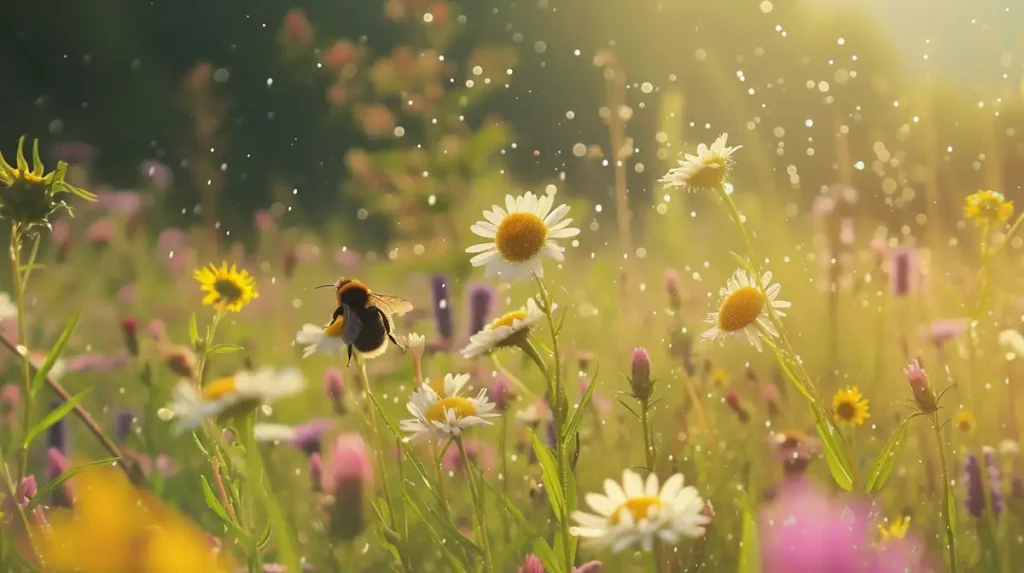
What is Biodynamic Beekeeping – Conclusion
Biodynamic beekeeping is the practice of providing a completely natural environment for bees. Only natural materials are used in the hive and swarming is allowed. The queen is allowed free movement within the hive and should not be replaced regularly.
Those who practice biodynamic beekeeping do not see themselves as keepers or ‘havers’ of bees and most will refer to themselves as bee stewards rather than beekeepers.
Looking to up your beekeeping game? Check out our latest product recommendations so you can take things to the next level!
Introducing The Top 12 Best Beekeeping Veils For 2024
Introducing The Top 20 Best Beekeeping Gloves For 2024
Introducing The Absolute Best Beekeeping Suits For 2024
The 15 Top Beekeeping Books for 2024
The Top 11 Honey Extractors for 2024
The Top 12 Mason Bee Houses for 2024
Beekeeping Disclaimer:
Beekeeping, like any agricultural activity, involves inherent risks. It is important to understand these risks and take appropriate measures to mitigate them.
Potential risks associated with beekeeping include:
- Bee stings: Honey bees are generally not aggressive but can become defensive if they feel threatened or their hive is disturbed. Bee stings can cause allergic reactions or even anaphylaxis in some individuals, which can be life-threatening. It is important to wear protective clothing and follow best practices when handling bees to minimize the risk of stings.
- Diseases and pests: Bees can be vulnerable to various diseases and pests, including mites, viruses, and bacterial infections. These can have significant impacts on bee colonies, leading to reduced honey production or even colony collapse. It is important to monitor hives regularly and take appropriate measures to prevent and treat diseases and pests.
- Weather conditions: Extreme weather conditions, such as drought or cold temperatures, can affect the health and productivity of bee colonies. It is important to ensure that hives are appropriately sheltered and provided with adequate food and water.
- Environmental hazards: Bees can be affected by environmental hazards such as pesticide exposure, pollution, and habitat loss. It is important to be aware of these hazards and take appropriate measures to protect bee colonies and promote healthy environments for bees.
- Legal requirements: Beekeeping may be subject to local, state, or national regulations, such as registration or inspection requirements. It is important to be aware of these requirements and comply with them.
While beekeeping can be a rewarding and enjoyable activity, it is important to be aware of the potential risks and take appropriate measures to mitigate them. By following best practices and staying informed about the latest developments in beekeeping, beekeepers can help ensure the health and productivity of their hives and contribute to the well-being of bee populations worldwide.
Last update on 2024-04-25 / Affiliate links / Images from Amazon Product Advertising API

